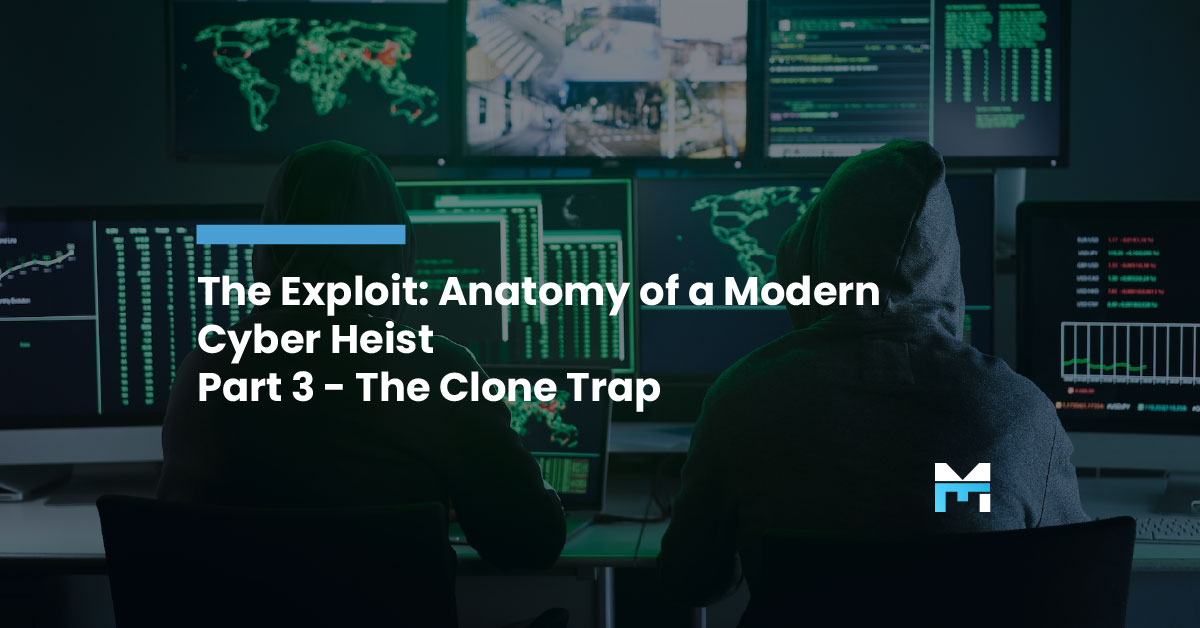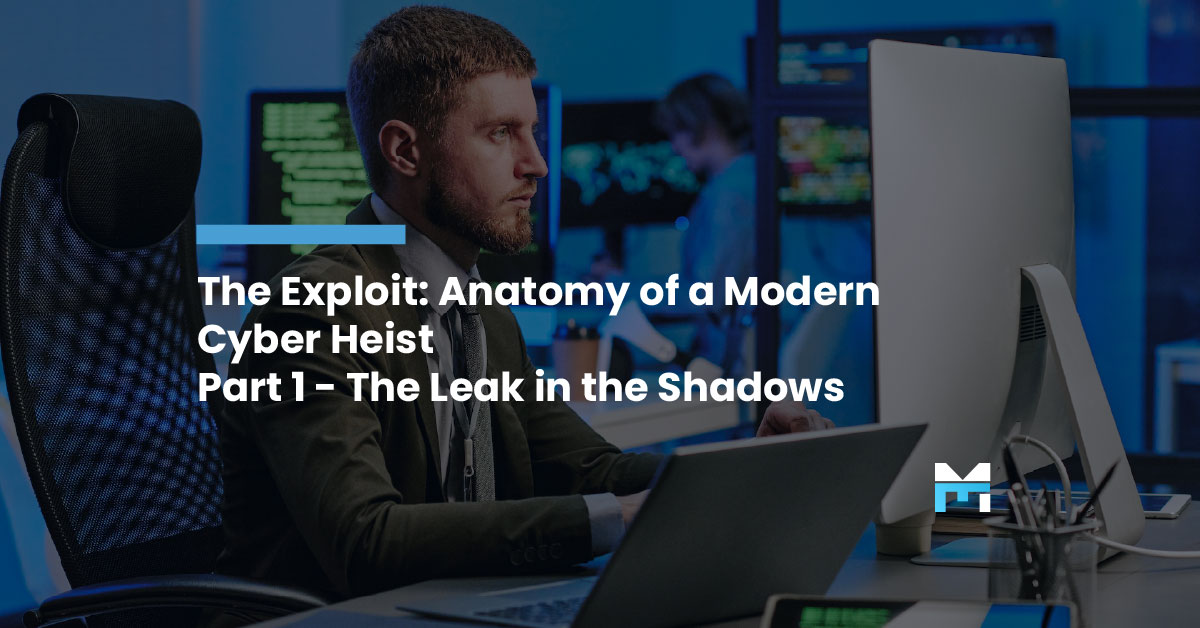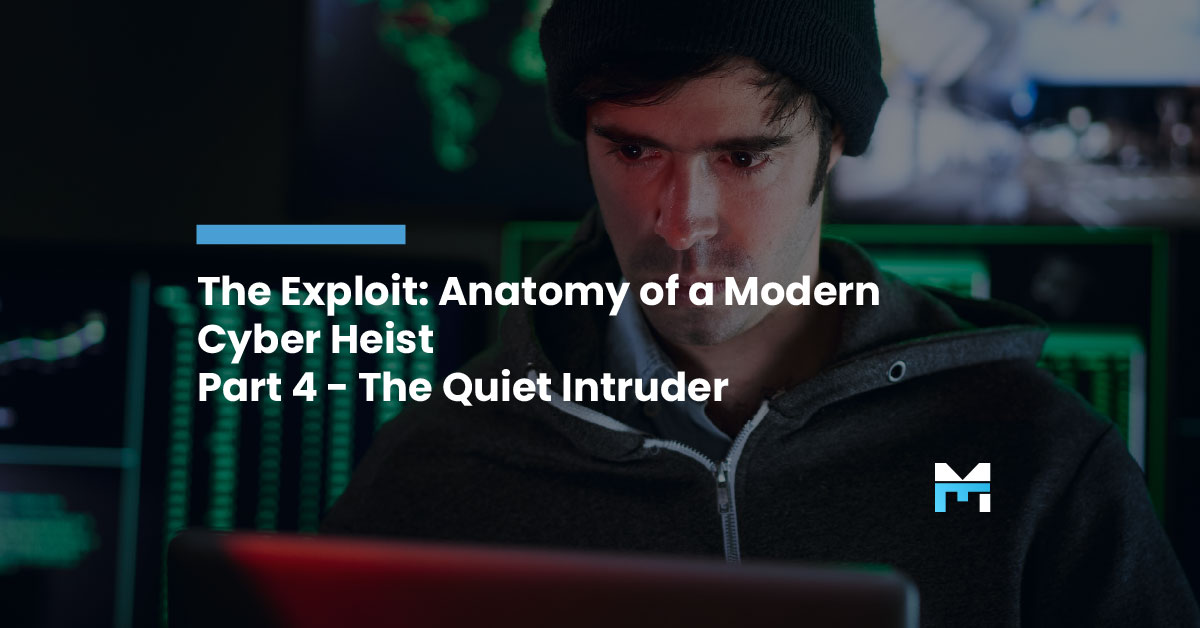The Exploit: Anatomy of a Modern Cyber Heist Part 1 - The Leak in the Shadows
Welcome to part one of our fictional, yet oh-so-realistically plausible series about cybersecurity failures and the lessons every business...
Information Security Compliance
Add security and compliance to Microsoft 365
BI Reporting Dashboards
Realtime pipeline insights to grow and refine your learning operation
Integrations for Banks & Credit Unions
Connect LOS, core platforms, and servicing system
Productivity Applications
Deploy customized desktop layouts for maximum efficiency
Server Hosting in Microsoft Azure
Protect your client and company data with BankGrade Security
2 min read
Justin Kirsch : May 26, 2025 2:30:00 PM

Chad’s login credentials weren’t just stolen—they were live streamed. Not in the Netflix or Hulu sense but in that every keystroke, every click, every move was being watched and recorded by the hacker in real time. When Chad clicked the link and entered his credentials into the fake site, he wasn’t submitting them to a database or a script that just stored the info to be used later.
Instead, the hacker’s phishing site was acting as a live middleman (a proxy)—relaying Chad’s keystrokes in real time to the actual CYA Finance login page behind the scenes.
The proxy page NullGhost built didn’t just grab a password and vanish. It mimicked the entire session, capturing cookies, session tokens, and behavior patterns.
So when NullGhost entered CYA Finance’s systems later that night, they didn’t need to brute-force anything. To the firewall and the SSO provider, they were Chad.
From the moment they stepped through the digital doors, NullGhost moved with surgical precision. They immediately began lateral movement, silently testing permissions and probing for weak points in CYA’s infrastructure.
They mapped internal systems, indexed databases, and identified critical assets: archived financial reports, vendor payment schedules, internal communications, and unencrypted email backups.
Rather than triggering alarms by exfiltrating large files, NullGhost copied small segments of data and stored them in encrypted local caches for slow extraction later—timed to blend in with routine outbound traffic.
They also created a hidden admin account with obfuscated naming conventions that mimicked a legitimate service account. This ensured persistent access even if Chad’s compromised credentials were eventually revoked.
What made this attack even more dangerous was how well NullGhost had studied Chad’s behavior.
Session tokens—unique digital keys that authenticated Chad’s session—were stolen during the proxy login. With those, NullGhost didn’t need to keep using passwords. They could ride existing sessions without tripping multi-factor authentication checks.
And by mimicking Chad’s normal access times, communication style, and click paths, their behavior blended in perfectly with expected patterns.
This wasn’t a brute force breach. It was social engineering, session hijacking, and stealth ops rolled into one.
Chad was still logged in the next morning. Nothing appeared wrong. No password resets. No session lockouts. He didn’t even get logged out. But deep in the system logs, strange anomalies began to accumulate: logins from unknown IP ranges, elevated permission changes, email forwarding rules set up and then deleted.
Nothing individually screamed breach. But together? They painted a chilling picture of quiet infiltration.
The clone didn’t just look like Chad’s portal. It became him.
Coming up in Part 4: The Quiet Intruder
The attacker is still inside. And now they’ve left traps behind.

Welcome to part one of our fictional, yet oh-so-realistically plausible series about cybersecurity failures and the lessons every business...

Two weeks later, Chad was sitting at his desk, nearly vibrating with excitement. It was Wednesday, hump day, and he was finally going to meet some...

Three weeks had passed since Chad clicked that fateful link.